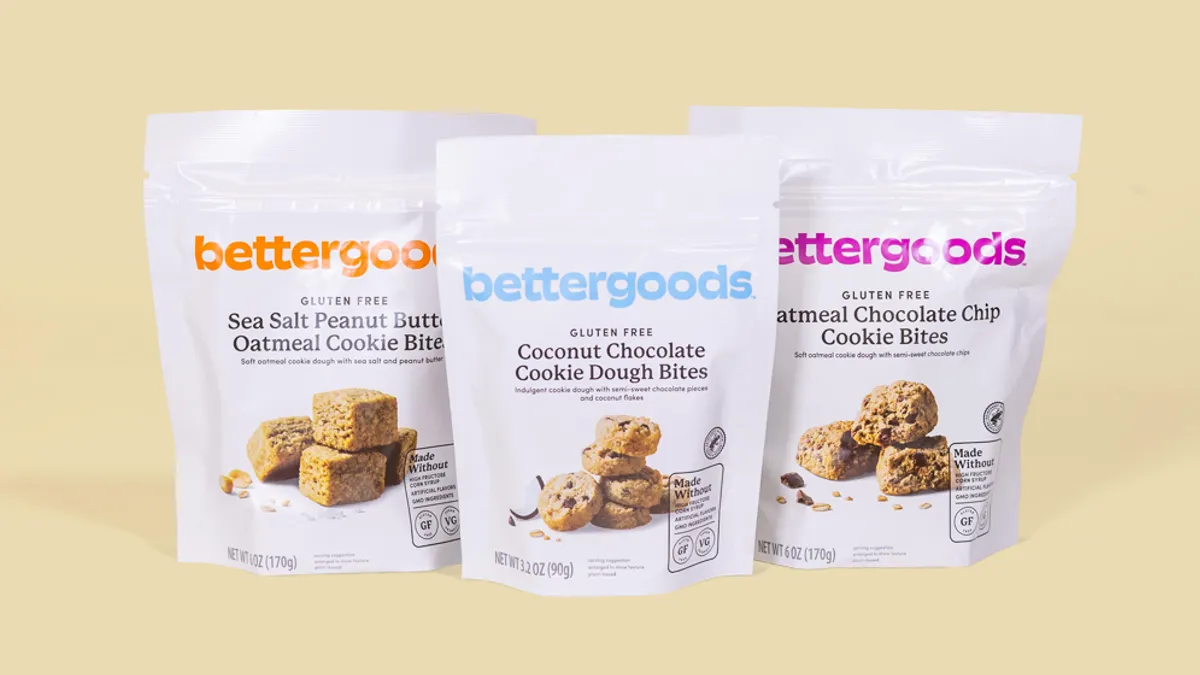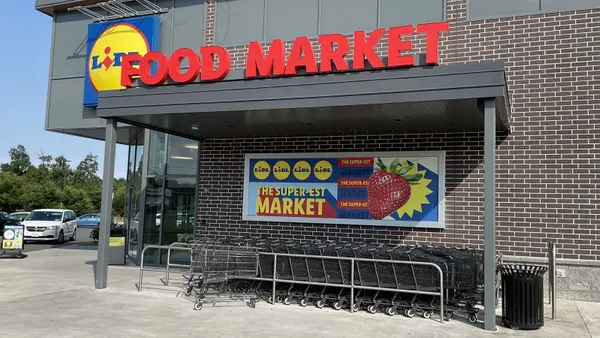Walmart’s new grocery private brand bettergoods leans into the retailer’s reputation for low prices, but also aims to appeal to consumers across income brackets.
Bettergoods, which the retailer announced at the end of last month, has items ranging from $2 to under $15 across grocery categories. Seventy percent are priced under $5, Walmart President and CEO Doug McMillon told investors during an earnings call on Thursday.
Like the offerings found at Trader Joe’s or Target, Walmart’s bettergoods brand aims to combine low prices with stand-out product attributes. When announcing the brand, Walmart said it zeroed in on three key areas: culinary experiences, plant-based and “made without.”
“The brand focuses on today's trends and premium quality. … This is the type of quality and value that will resonate with customers across income spectrums,” McMillon said.
So far, that seems to be checking out, according to research from Numerator. By analyzing purchase data of bettergoods items and survey data based on 200 receipt-verified purchasers of the brand, the firm found that bettergoods appeals to consumers across income groups.
Low-income and high-income homes are, respectively, 34% and 20% more likely to purchase bettergoods compared to Great Value shoppers, Numerator found. The firm said its findings suggest that bettergoods is appealing to lower-income consumers who want to treat themselves while giving higher-income consumers a product that goes beyond base needs at an affordable price.
Among surveyed shoppers of bettergoods ice cream, 40% had annual incomes below $40,000, while nearly 33% had incomes between $40,000 and $125,000. Twenty-seven percent made more than $125,000.
“Compared to its Great Value counterpart, the demographics of Walmart’s bettergoods ice cream buyers indicate a younger, more naturals-focused consumer who has dietary restrictions and cares about price and flavor,” Numerator said, noting that around a third of consumers purchased bettergoods ice cream based on its nutritional facts.
Along with ice cream, the line has 300 items spanning categories such as frozen, dairy, snacks, beverages, pasta, soups, coffee and chocolate.
“Bettergoods allows consumers who have purchased Great Value to trade up and spend more within Walmart’s private brand portfolio overall at the expense of extra volume, which benefits Walmart’s margins,” the report added.
During the 12-month period that ended with the close of this year’s first quarter, more than a quarter (26.4%) of Walmart’s total grocery sales were from its private label offerings, according to Numerator.
The retailer said it saw private brand penetration increase in grocery during the first quarter of its fiscal year 2025.
“While private brand penetration is in the low 20s as a percent of sales, more than half of all customer grocery baskets over the last year had a private brand in them,” Walmart CFO John David Rainey told investors during the earnings call.
Bettergoods marks the largest food private brand launch for the retailer in 20 years, McMillon told investors.
Walmart’s effort to beef up its food private label portfolio comes as the retailer continues to grow its grocery sales even as inflation rates decline. As restaurant traffic falls, grocers and mass retailers are swooping in with low-priced offerings to help consumers find easy and affordable meal solutions.
In an interview with CNBC, Rainey said that the high price of fast food has spurred more shoppers to head to the retailer’s grocery aisles. “It’s roughly 4.3 times more expensive to eat out than it is to eat at home,” he told the news outlet. “And that’s benefiting our business.”
Correction: The article misstated when bettergoods debuted. Walmart announced the private label line at the end of April.














